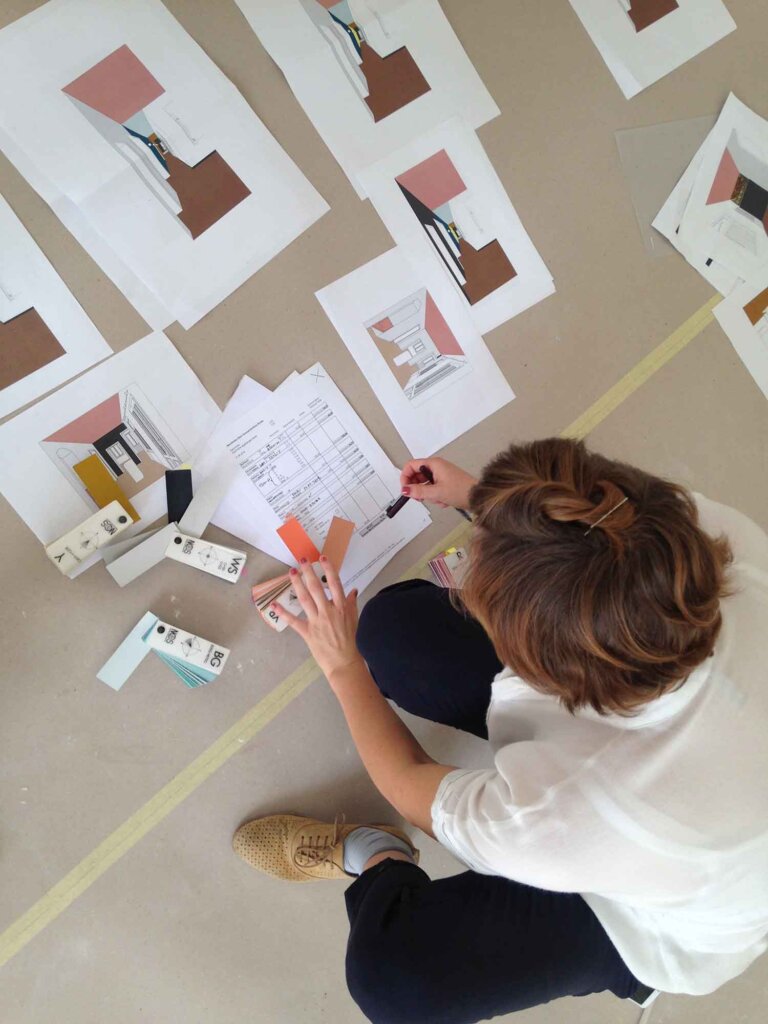
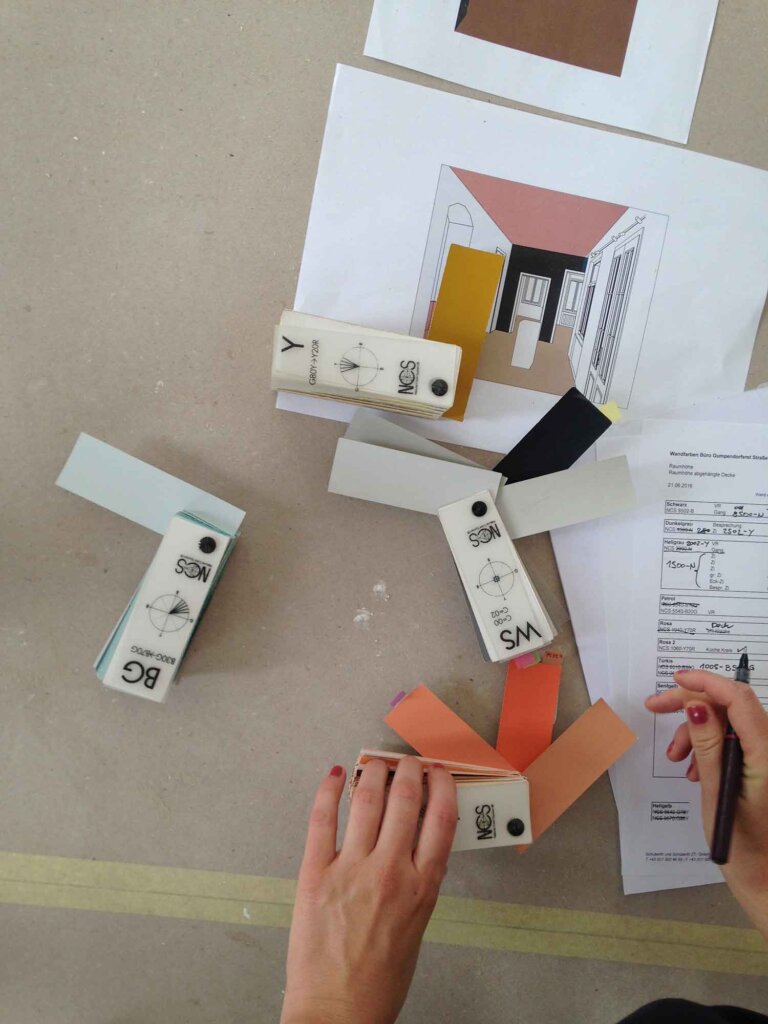
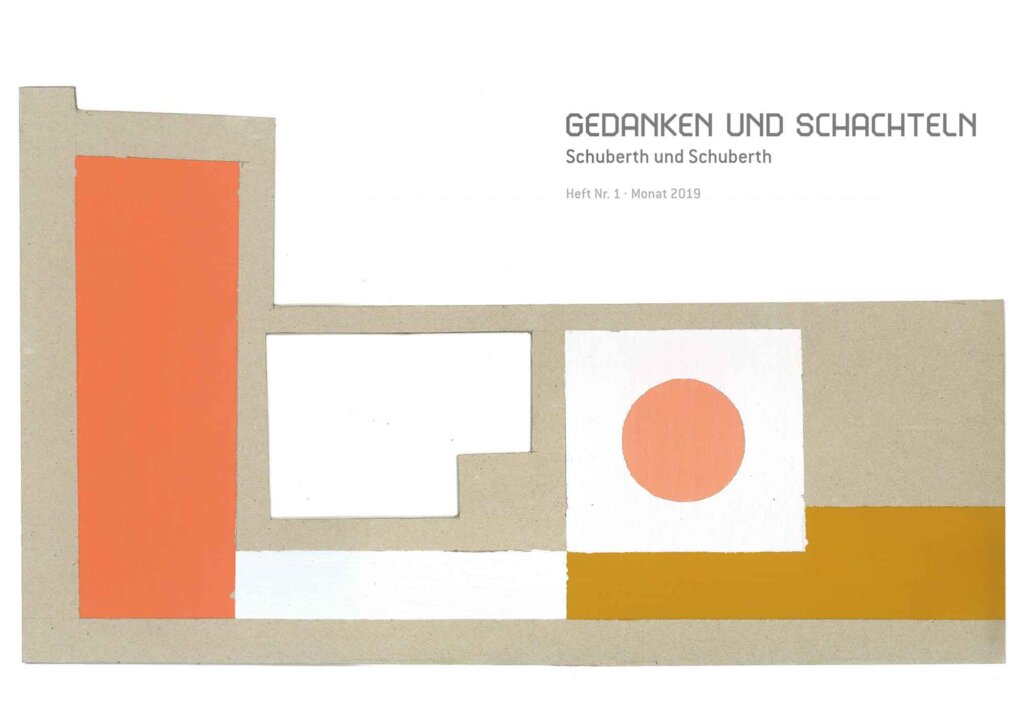
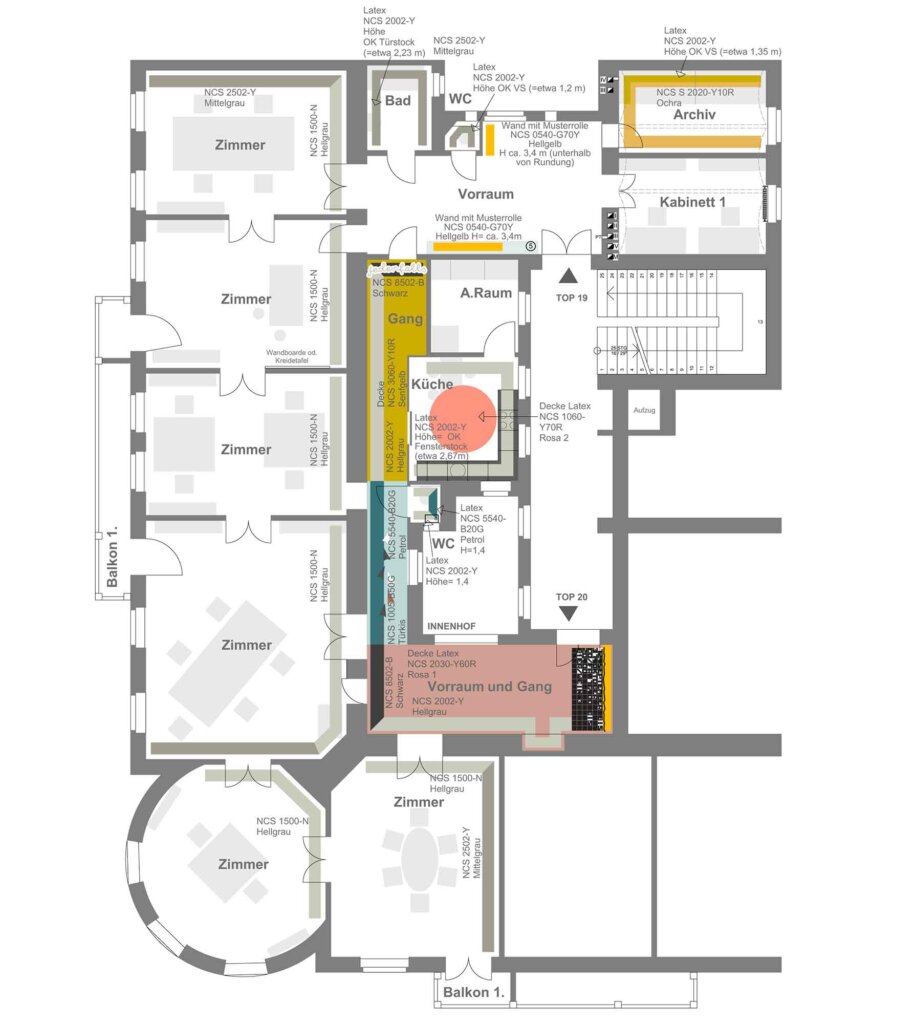
Gumpendorf office, ceiling and floor plan.
Light gray: NCS 1500‑N; Medium gray: NCS 2502‑Y, Black: NCS 8502‑B, Salmon ceiling: NCS 2030-Y60R (Latex), Mustard yellow ceiling: NCS 3060-Y10R, Petrol wall: NCS 5540-B20G, Turquoise: NCS 1005 B50G, Pink dot: NCS 1060-Y70R (Latex)
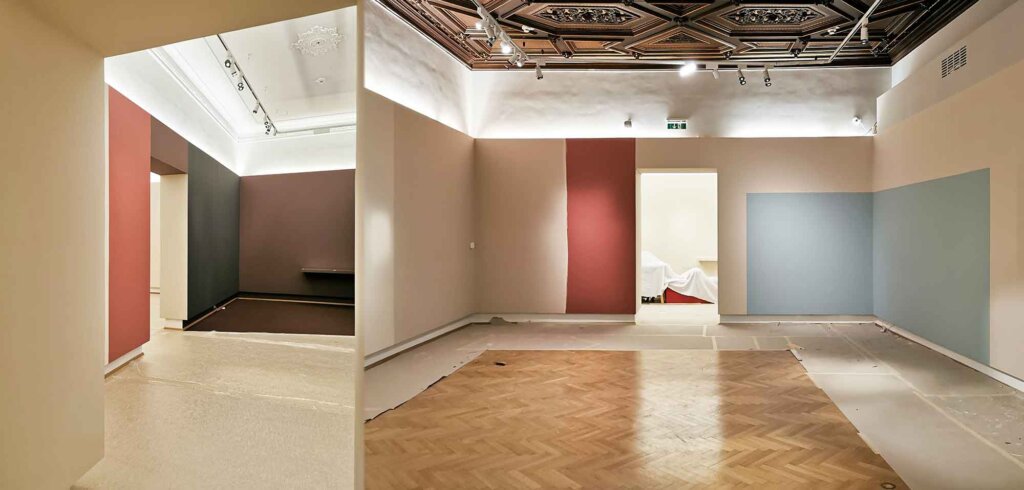
“The Viennese Rothschilds. A thriller”, exhibition at the Jewish Museum Vienna, 2021/ 2022. Wall colors: NCS S1505-Y30R (beige), NCS S2005-Y40R (dark beige), NCS S2000‑N (light gray) “Crises”: NCS S7010-Y90R (Aubergine), NCS S8502‑B (Anthracite) “Highlights”: NCS S4030-Y80R (Terracotta Red) Special colors: NCS S2010-B30G (light blue), RAL 9003 (signal white) Fabrics: SAHCO — Avalon 2, 055 (approx. moss green), 007 (light beige)
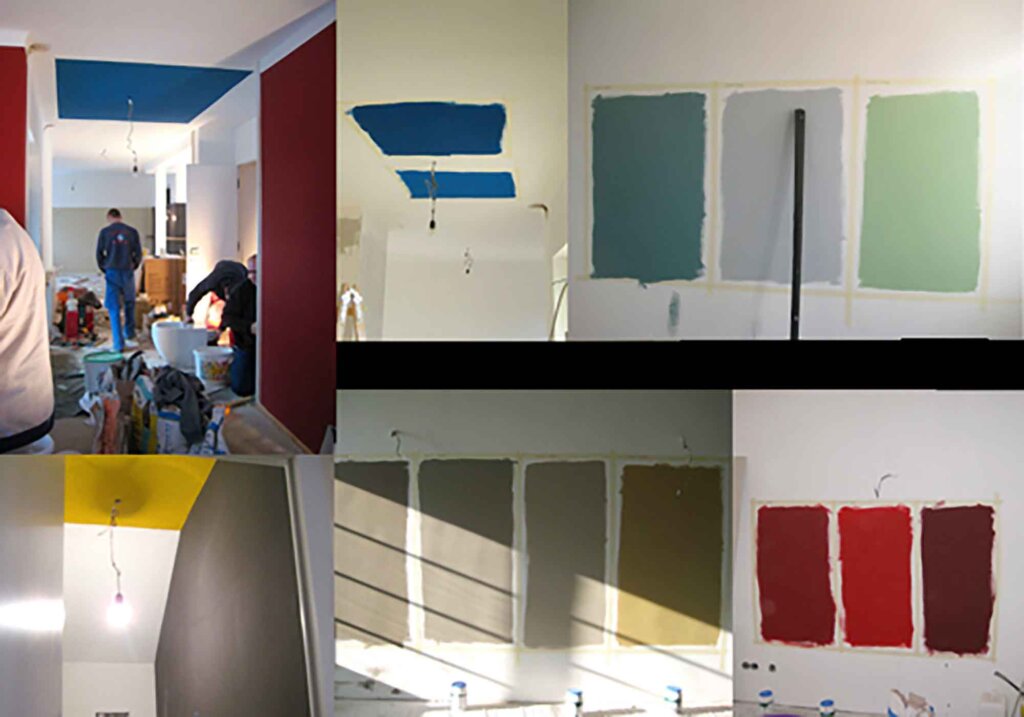
Color sample conversion Vienna-Hietzing.
Blue ceiling panel: 4550‑B, light green (right): NCS 2020-G30Y, dark green (left) NCS 4020_B50G, mustard yellow ceiling panel: NCS 2070-Y10R, light beige: NCS 2010-Y10R, dark beige: NCS 3005-Y20R, red (left): NCS 3560 Y90R
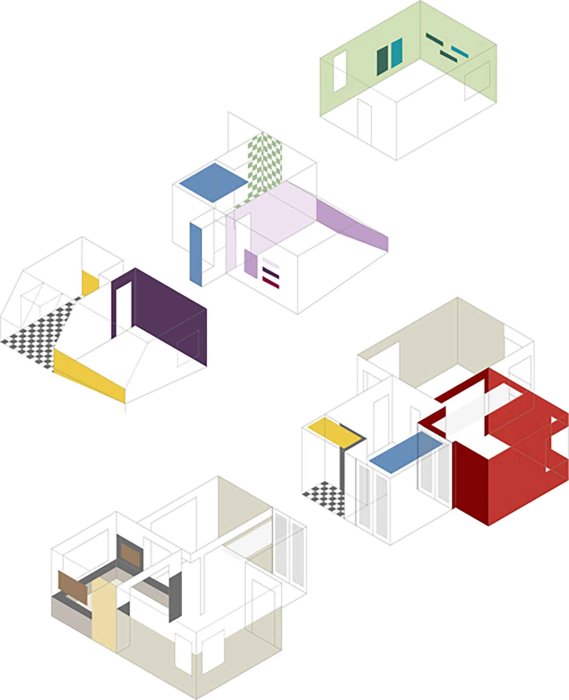
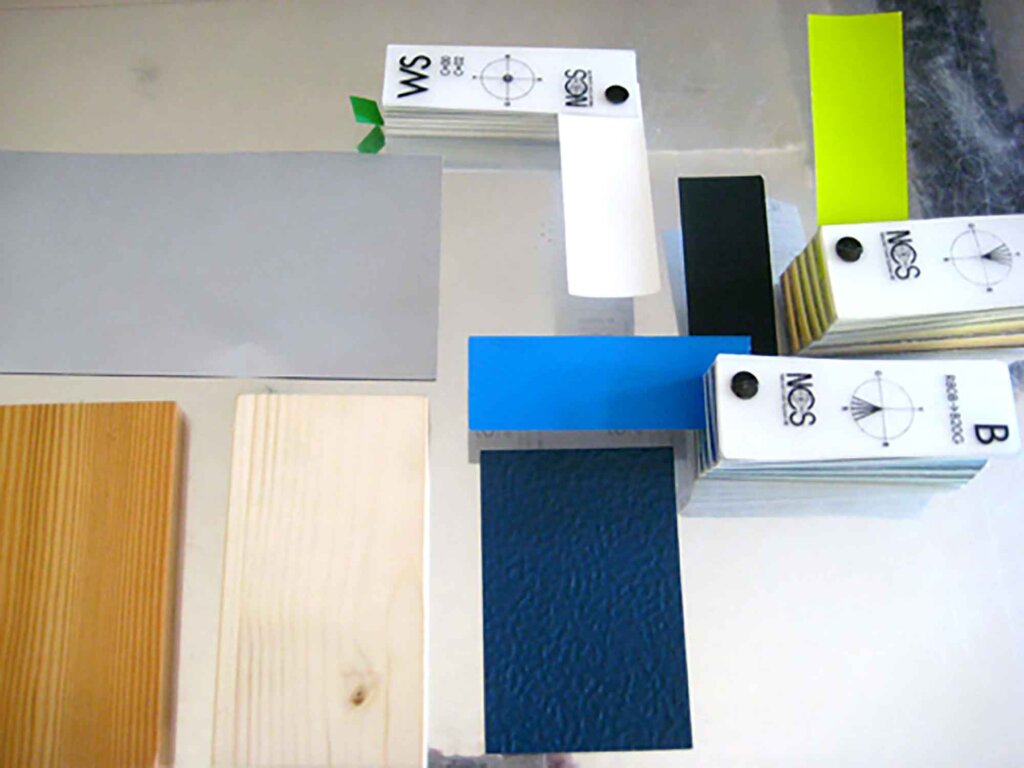
Color concept Haus Wasserstraße/ Weiss-Döring.
Black-blue: NCS 8005-B20G, blue: NCS 1565‑B, white: NCS 0300‑N, green-yellow: NCS 1075-G80Y
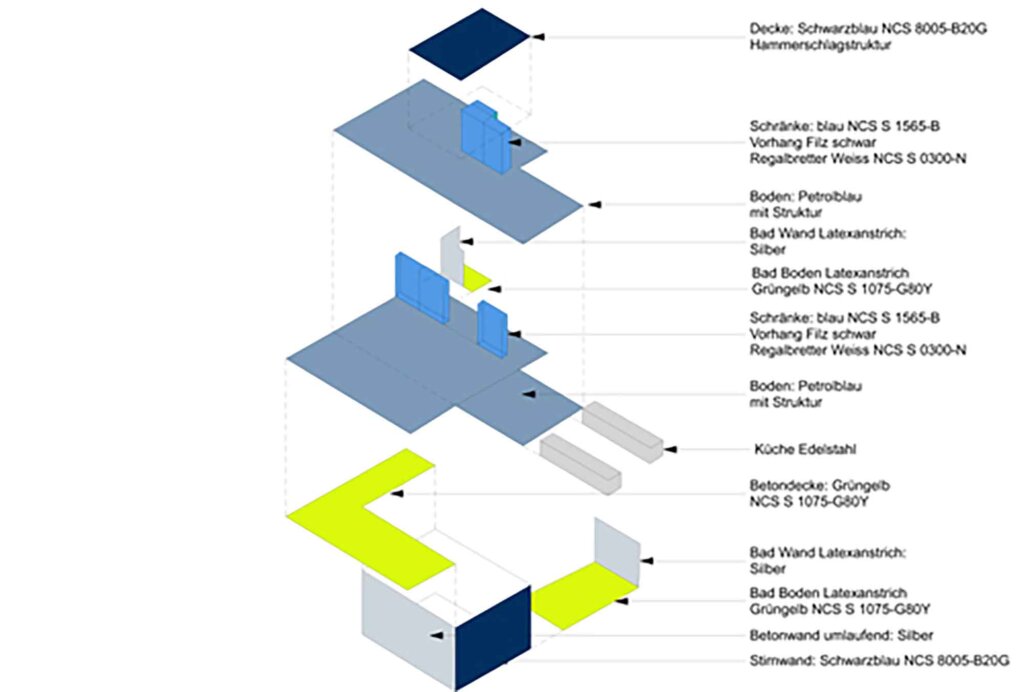
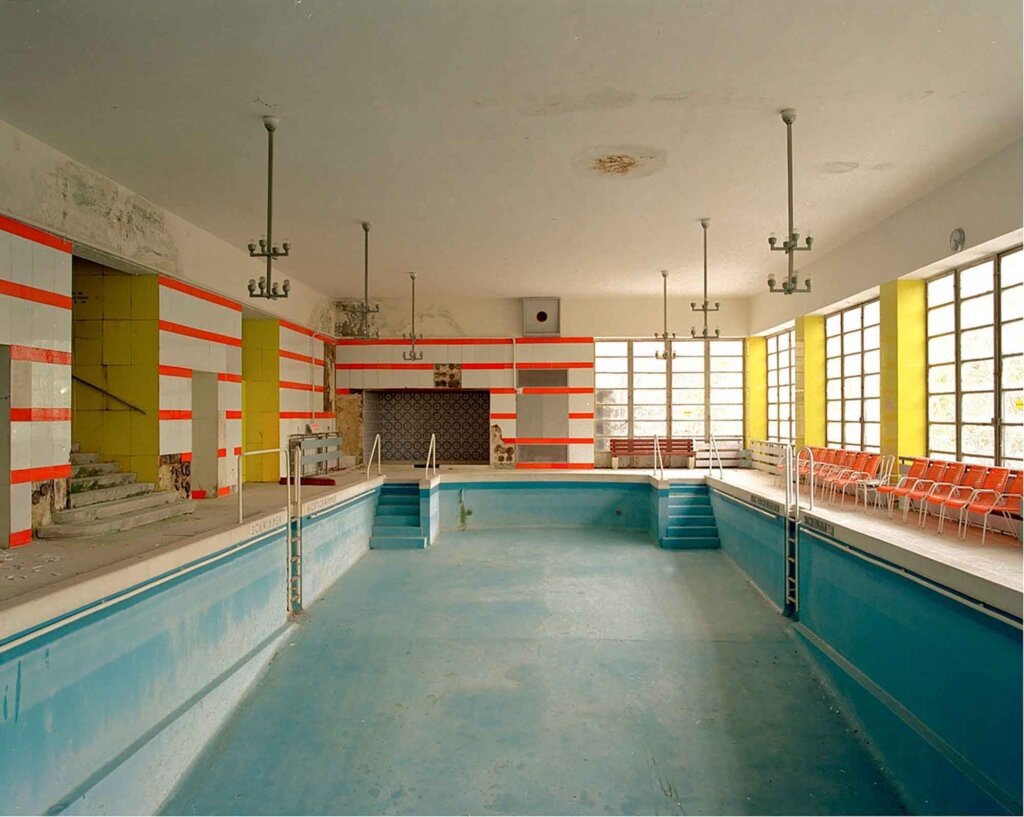
For inspiration: Südbahnhotel Semmering, architects Emil Hoppe, Otto Schönthal.
Architekturzentrum Wien, Collection, Photo: Margherita Spiluttini
/ Sample /
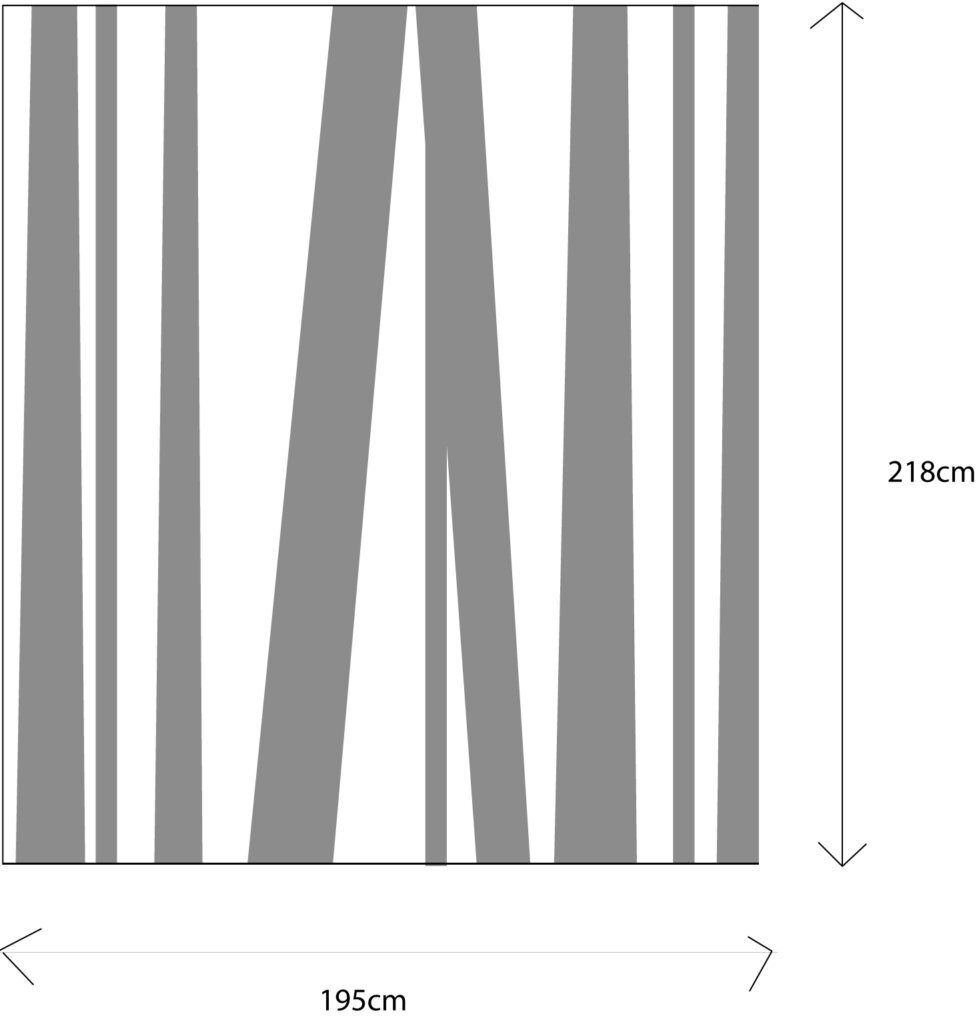
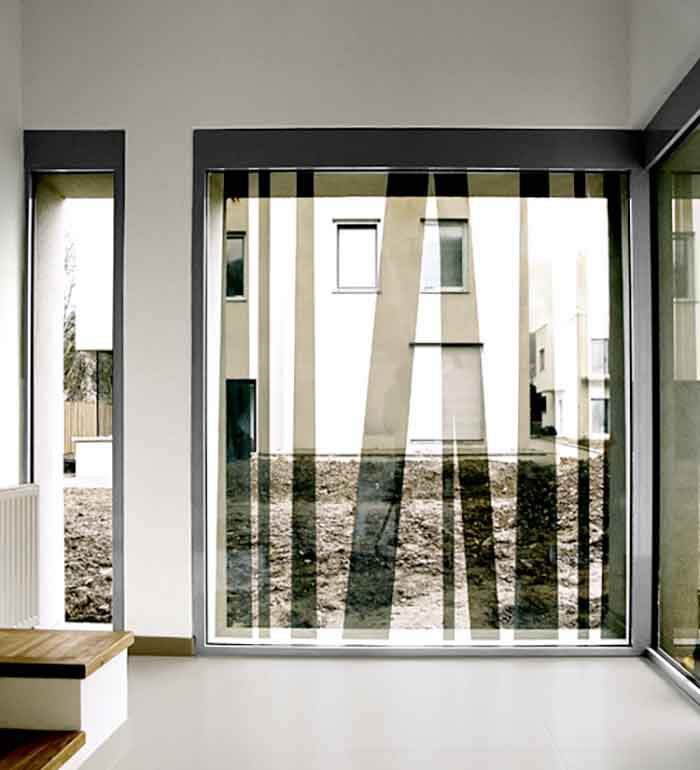
Mauerbach villa park, window films
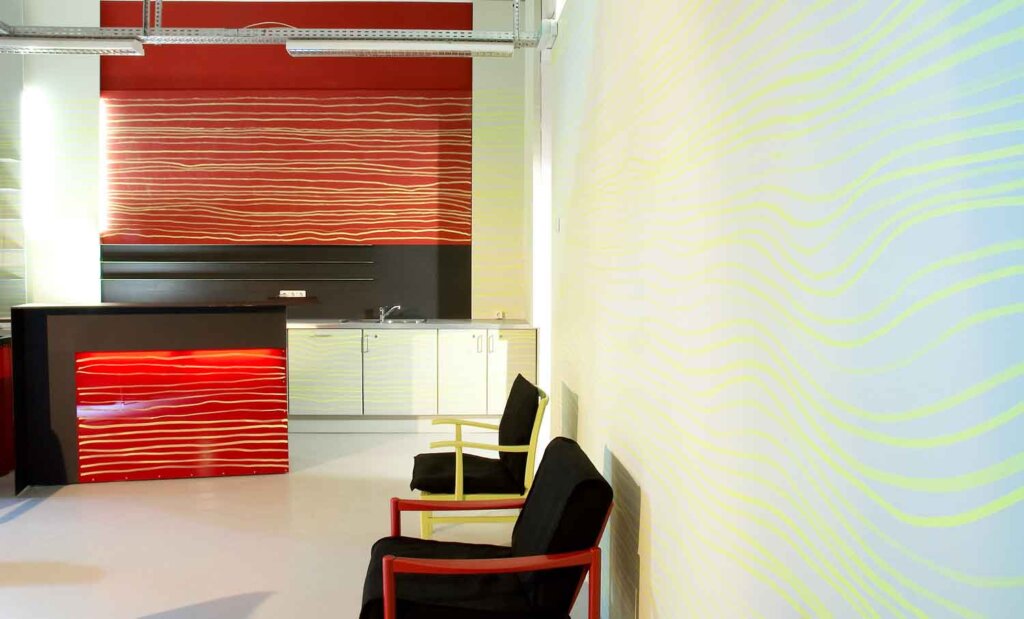
Check it, chalk lines on blackboard paint, design by Eleonore Bujatti
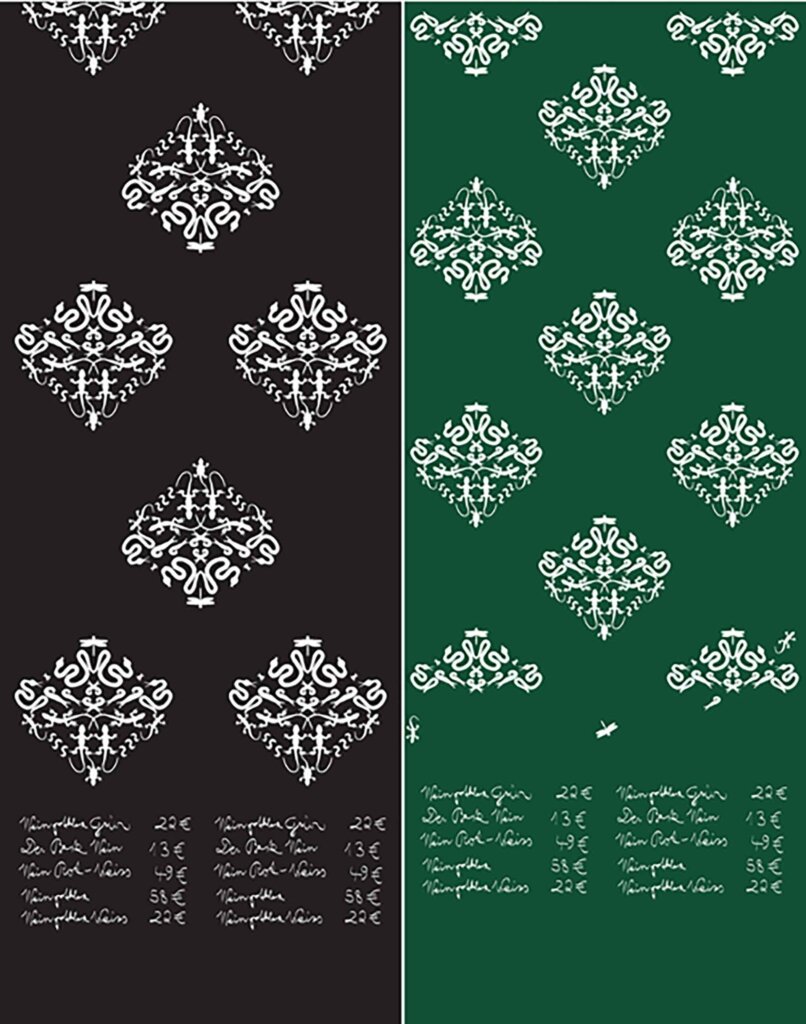
Animal wallpaper, for the floor-to-ceiling chalkboards in the Vinothek Café Atelier,
Design Eleonore Bujatti

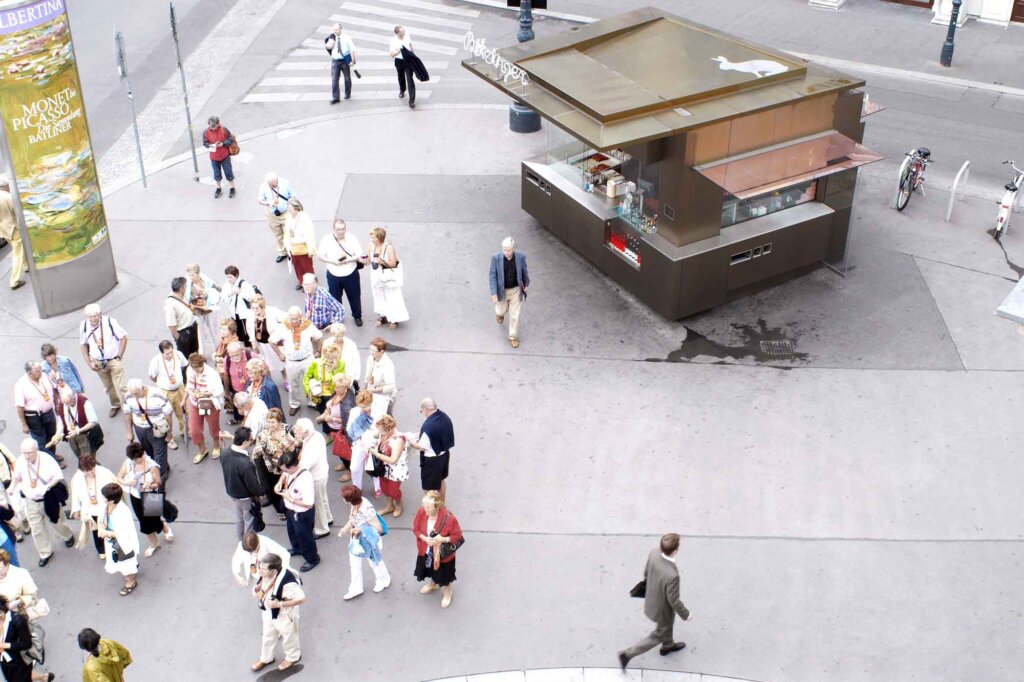
Albertina sausage stand with rabbit
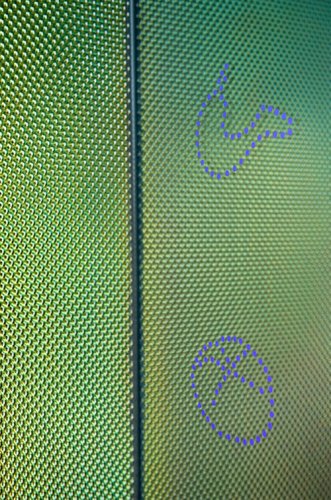
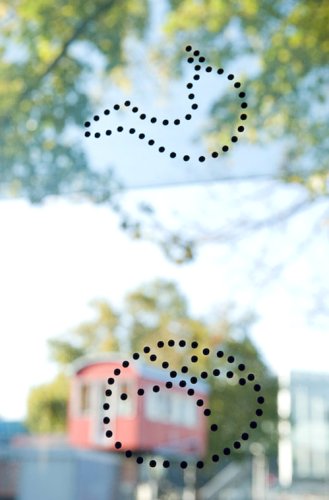
Glazing sausage stand Prater with stickers
/ Words /
Words that are hyphenated to form new combinations.
Used as a temporary chalk motif for the blackboards at “Check it”.
By Eleonore Bujatti.
WORK
SAUF
WALL
MULTI
TAL
DUCK
STATE
SEX
AMEN
EGO
IS
IN
HUMAN
ENGE
QUANTITY
ALL
IN
GANG
PUFF
ERZ
ONE
CONSUMPTION
ENTEN
DELICATE
EATING
KOMM
ISS
IONES
HAU
STIER
HORTEN
YOU
FLIEG
ENGE
WEIGHT
VERY
OHR
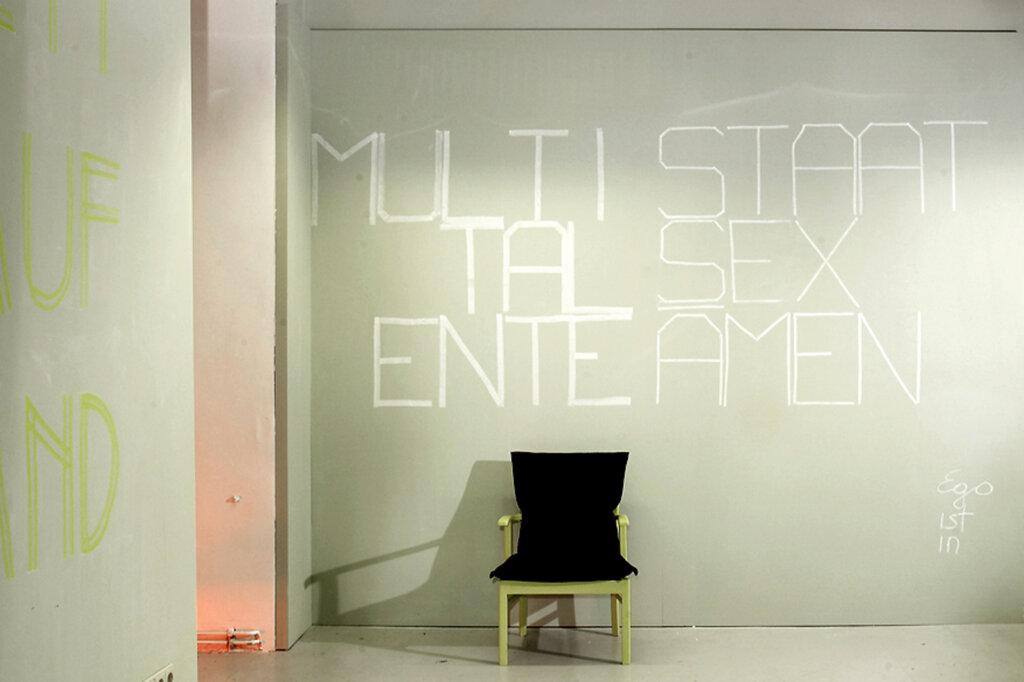
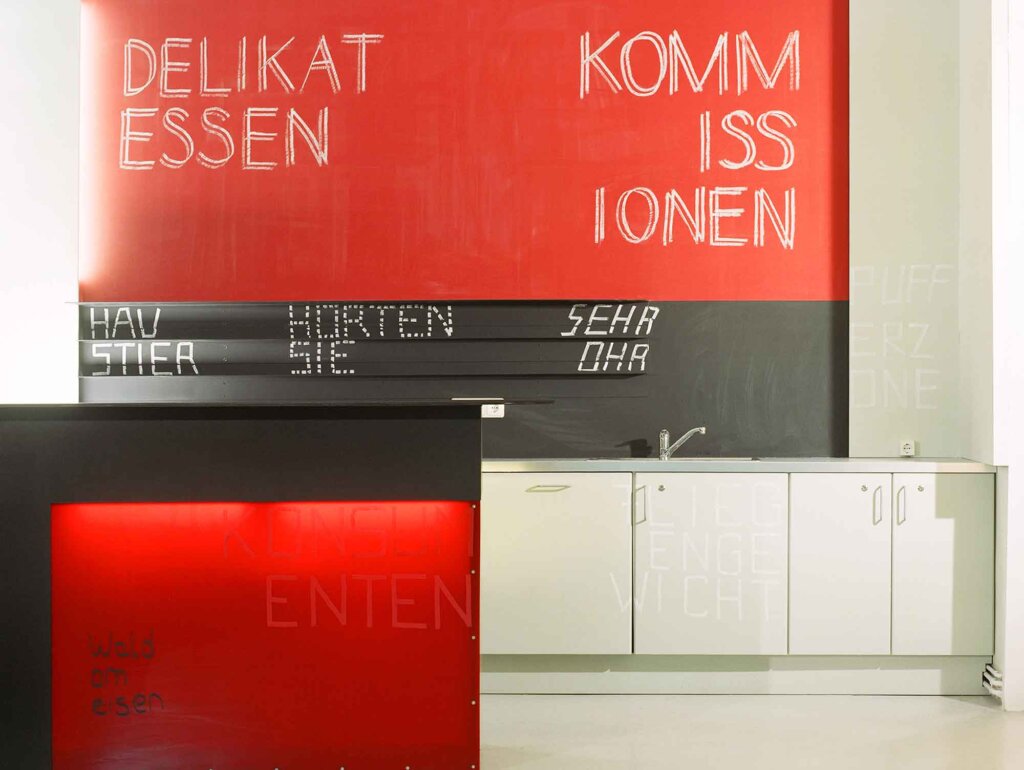

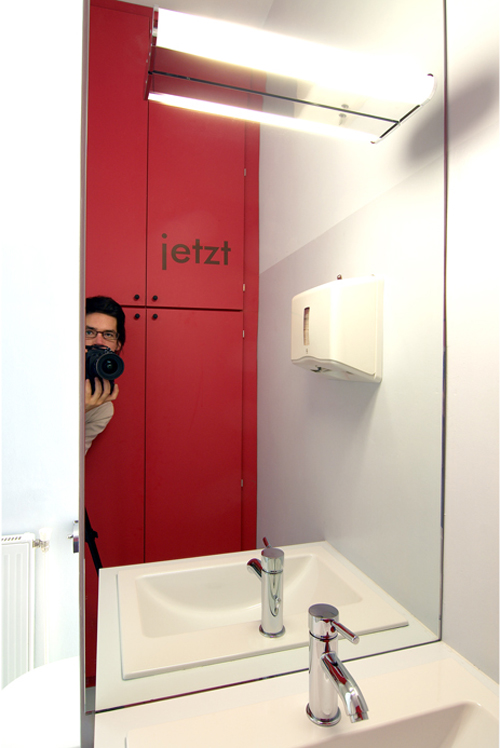
List of mirror words that did not make it:
Freshman
Earthling
Wait a minute
One moment
I am me
Now
Sky blue
Cloudless
Three-cheese high
Bon Voyage
Five seconds of beauty
Beautiful views

“Now”, Johanna Schuberth, plasticine on paper, 2008
/ font /
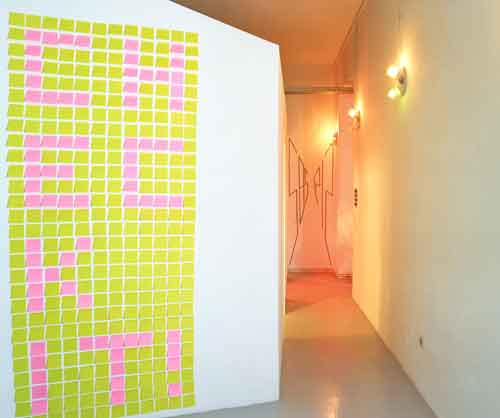
“CHECK IT” (Post-its as business cards) and “585 12 12” (advice telephone)
Design: Eleonore Bujatti
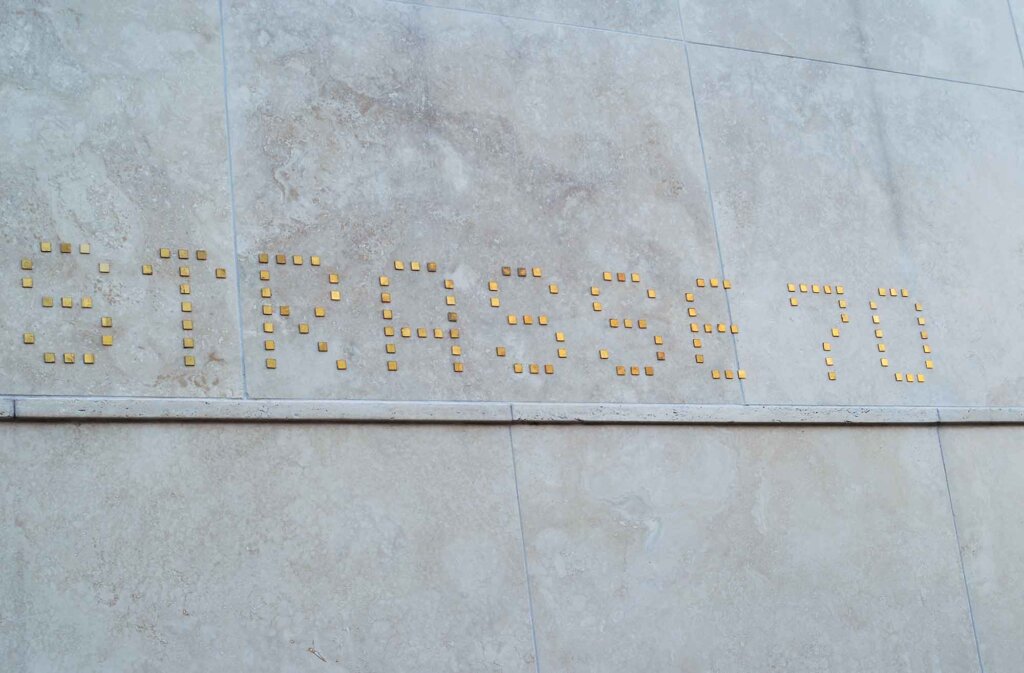
Design: Eleonore Bujatti, brass plates on travertine façade panels
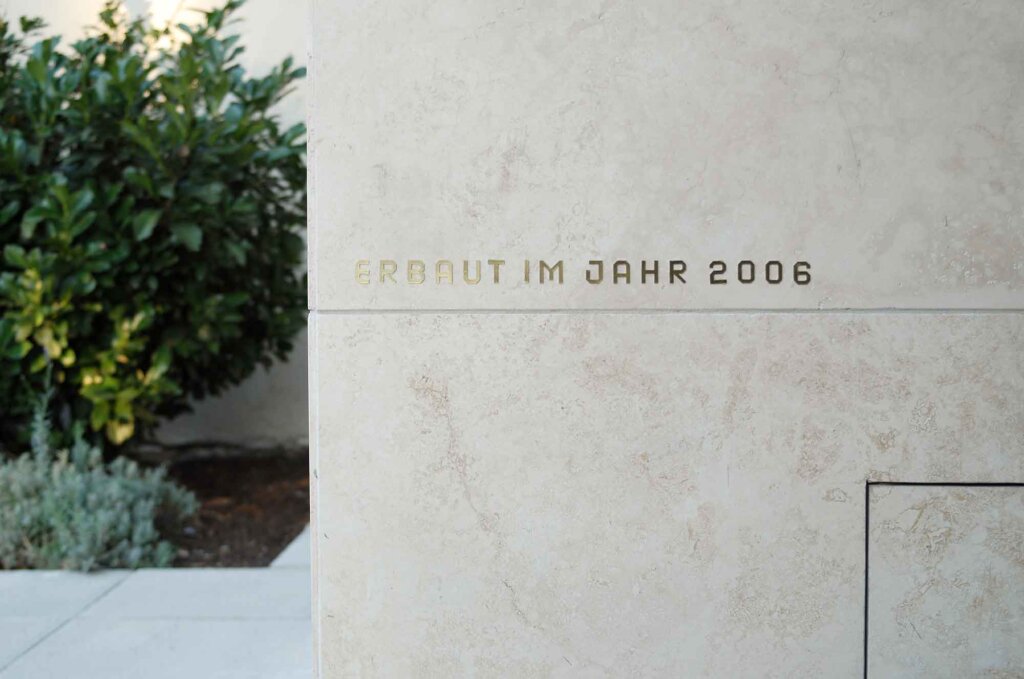
Design: Eleonore Bujatti, brass letters on travertine
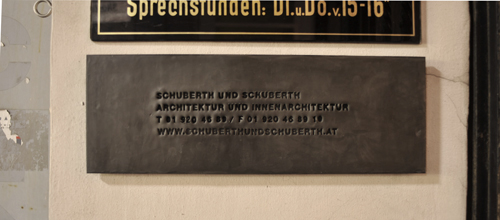
Door sign, plasticine on aluminum
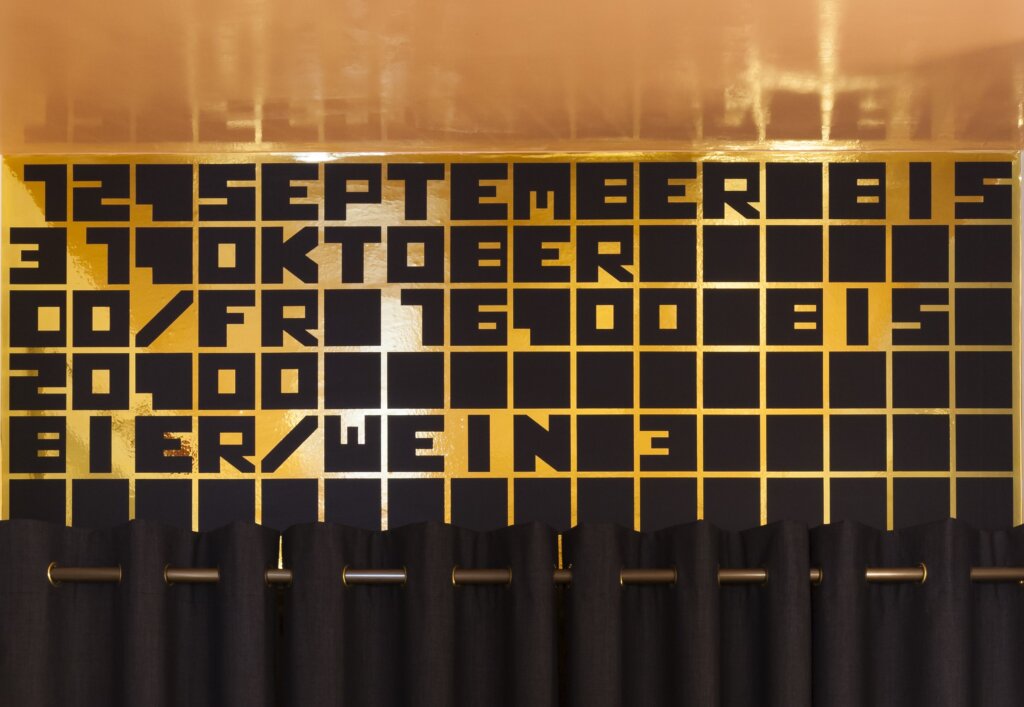
SEPTEMBER 12 TO OCTOBER 31 THU/FR 16.00 TO 21.00 BEER/WINE 3
Graphic translation of the Onyx wall, for American Bar REMAKE.
Design: Eleonore Bujatti
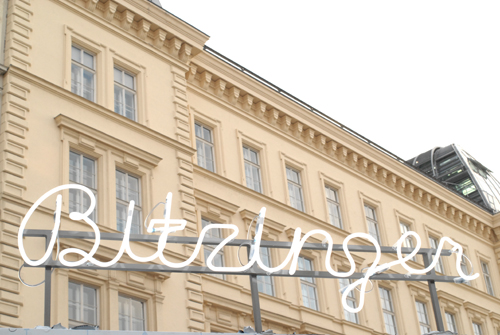
Design: Eleonore Bujatti
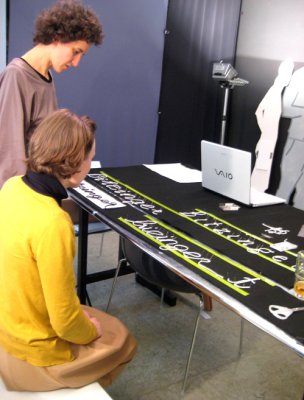
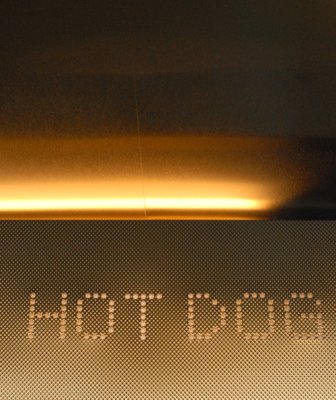

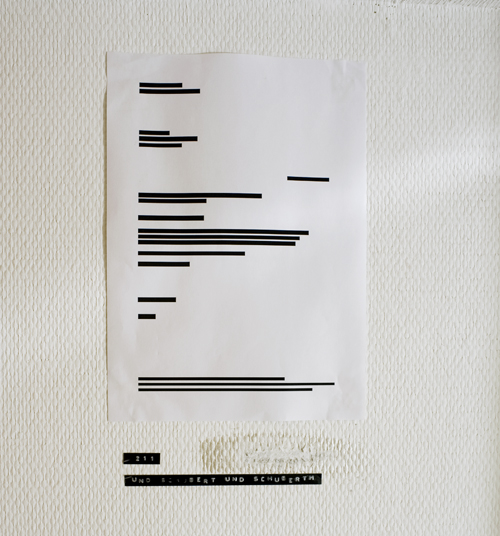
“The cell”, room labeling
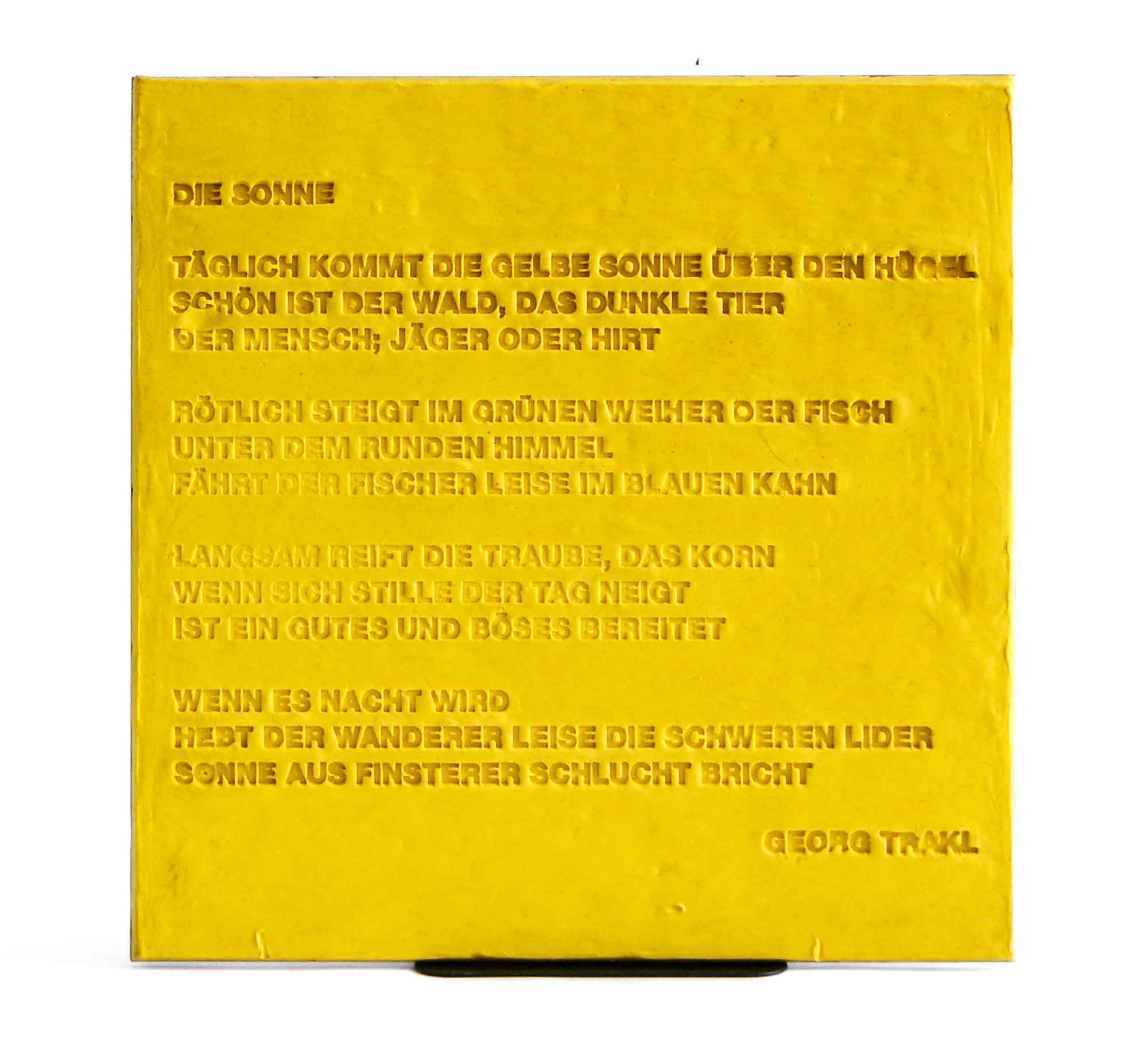
Georg Trakl “The Sun”, plasticine on brass, 32x32cm
/ Time and change /
Variants:
STAY IN TIME
CONSUMPTION
OPPOSITE
WINTER SLEEP
IMMEASURABLE
(TRZESNIEWSKI)
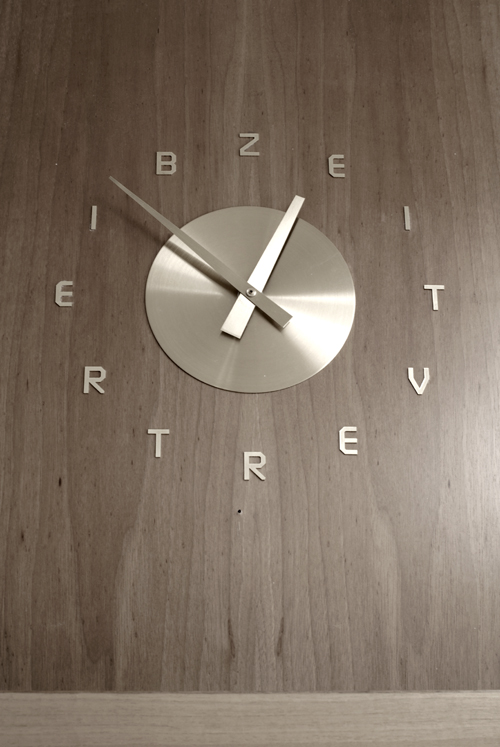
Letter clock in the foyer of the Hetzendorfer Straße residential building, 2006
Discarded text attempts:
“Una dabit, quod negat altera“
One hour grants what the other fails to
“Ultima latet“
The last hour is hidden
“Vulnerant omnes, ultima necat“
All hours wound, but the last one kills
In the mirror of time
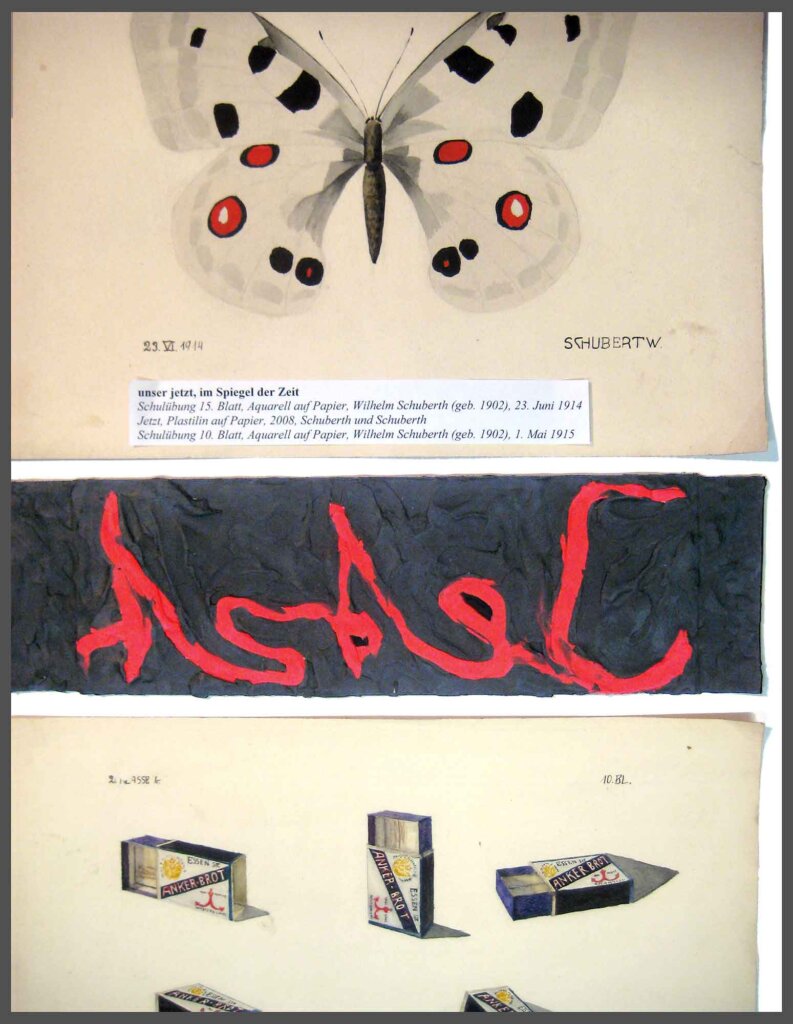
Published in “Die PRESSE”, Freiraum, January 3, 2009.
Material: School exercise 15th sheet, watercolor on paper, June 23, 1914 and school exercise 10th sheet May 1, 1915 by Wilhelm Schuberth (born 1902).
Comparison of our grandfather’s old school watercolors from 1914/1915 with a plasticine picture from 2008. Illustration techniques and pitfalls: A butterfly can be painted with a little practice. It is more difficult to grasp the course of time.
Rendezvous on the Strudlhofstiege
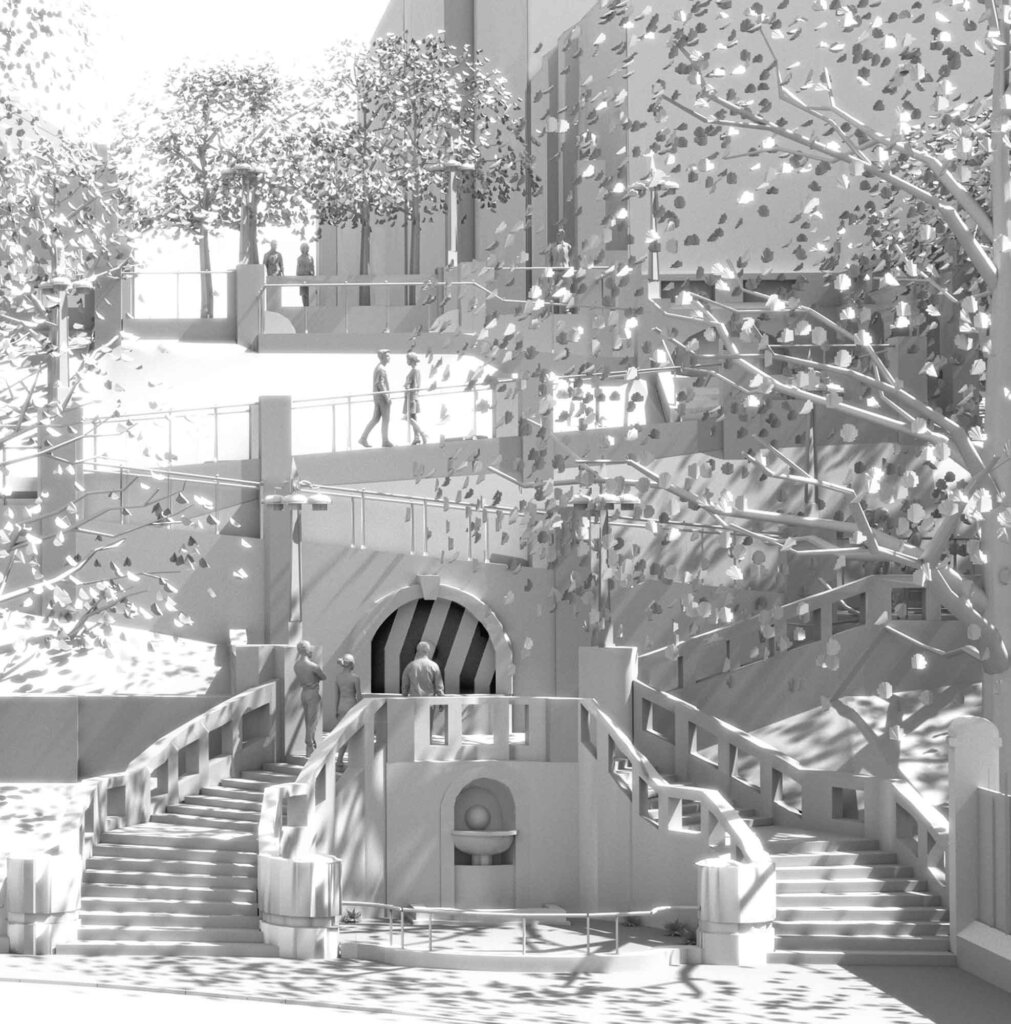
Illustration of the key scene from the novel “Die Strudlhofstiege” by Heimito von Doderer. The broken rendezvous — Schmelzer and Etelka Stangeler, who were actually hired as chaperones, notice Schmeller Senior, who has secretly followed his daughter in a cab to prevent Ingrid from meeting Stephan von Semski. At the same time, René Stangeler, Paula Schachl and Grauermann appear at the foot of the stairs and witness the scene. Stangeler has found the stage he had expected to find at this location.
(From: “Scenes from a neighborhood”, office magazine no. 2, 2019)
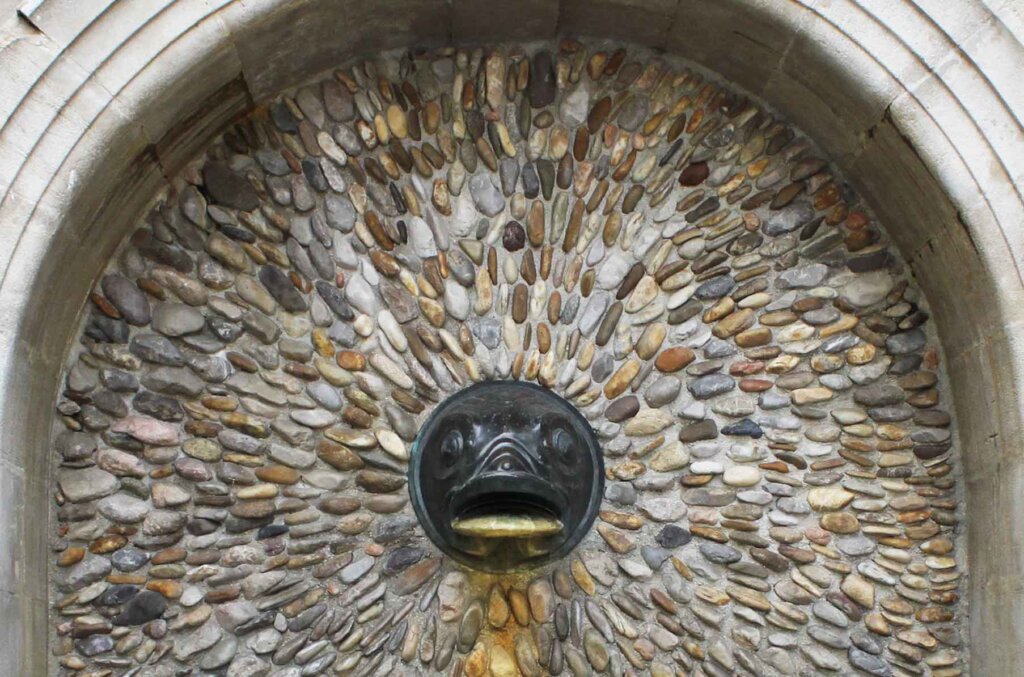
Detail of the Strudlhofstiege in August 2019
Foyer and entrance Julius-Tandler-Platz 4
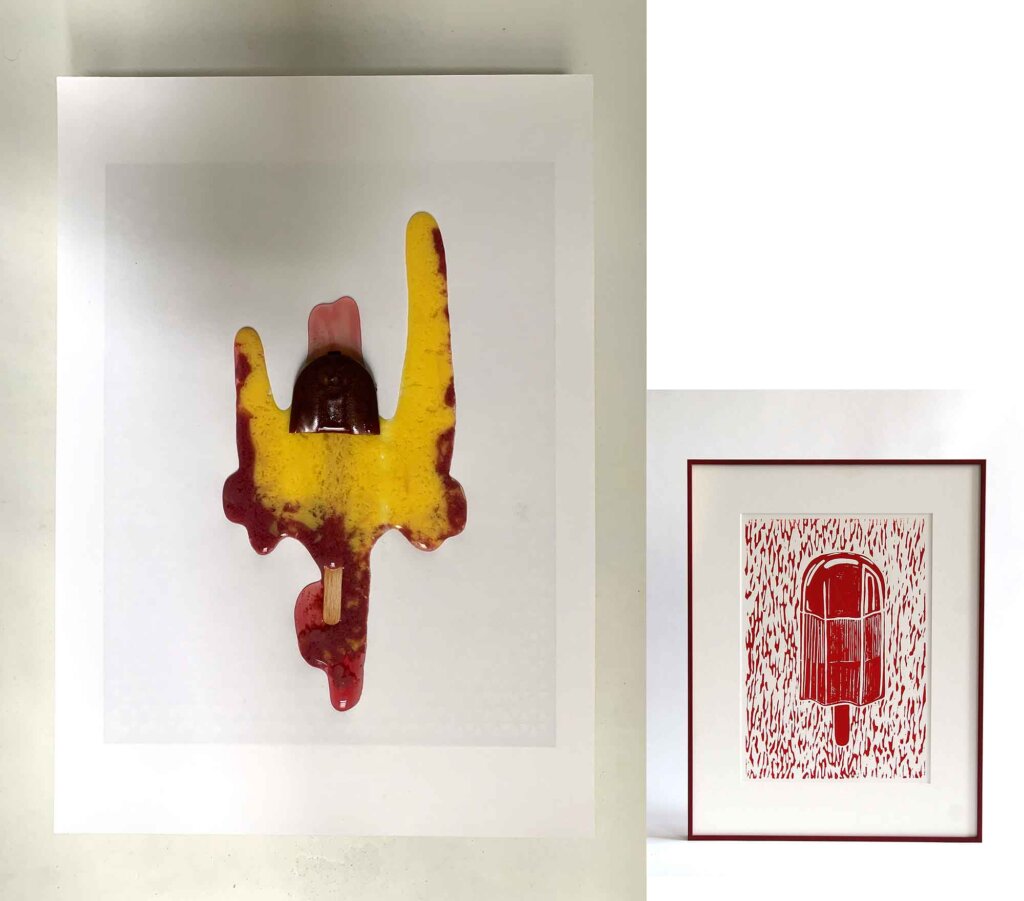
Jolly ice cream on paper and as a linocut
/ Stage /
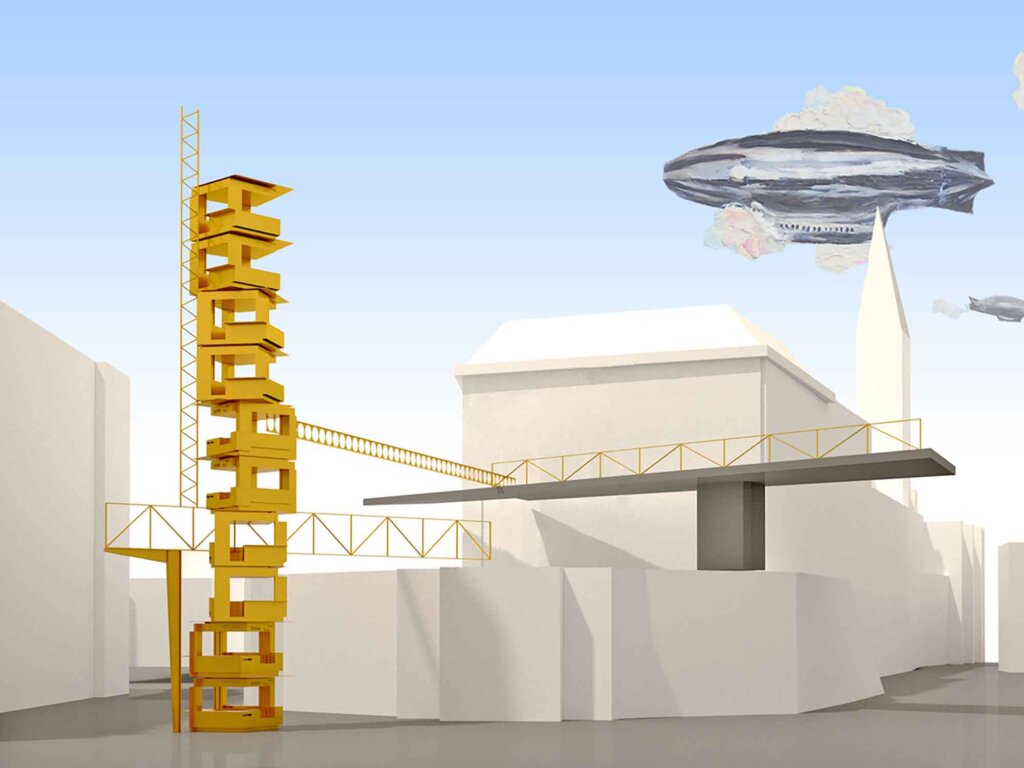
Albertina, April 2018
Rendering @ievgen_kalinovych, collage with plasticine image SUS
Two ways of reading:
The city as a stage 1
The metaphor has been given different, almost opposing interpretations. In her “Vita activa”, published in 1958, Hannah Arendt examined a theory of the public sphere and political action. It was based on the ancient Greek polis, the city-state as an association of people.
“The political sphere in the sense of the Greeks resembles such a perpetual stage, on which there is, so to speak, only an appearance, but no departure, and this sphere arises directly from a togetherness, the communicative participation in words and deeds”. It is about the presence of a fellow world, being seen and heard, appearing in front of others. This audience in an auditorium, in which everyone is both a spectator and a participant, is the polis.
The American sociologist Richard Sennet went even further. In the mid-1970s, he described in his book “Verfall und Ende des öffentlichen Lebens. The tyranny of intimacy”, he described how the private and the public interpenetrate. His thesis: public action is always action with masks. When these masks are missing, something like a “terror of intimacy” arises. Expressing oneself” replaces political discourse.
The city as a stage and political location is given a clearly positive charge.
(Arendt, Munich: Piper 2020, pp. 278, 279)
The city as a stage 2
We also enjoy strolling through summery old towns (such as Albertinaplatz, with our Bitzinger sausage stand) after the beautiful formula. One could also conclude from this that the architects’ project is primarily one of staging. It’s about creating scenes and atmospheres: scenes of entertainment and consumption — and scenes of living and working. The task of architecture could hardly be distinguished from that of stage design. Life as a staging in which we are participating visitors to our own exhibition? As early as 1988, the urban historian Werner Durth noted that the “concepts of the staging and dramaturgy of cities, which were put up for discussion with critical intent, were increasingly being turned into something positive and affirmed”.
(For further reading e.g.: Gernot Böhme, Architektur und Atmosphäre, Munich 2013 and Werner Durth, Die Inszenierung der Alltagswelt, 2nd edition, Braunschweig 1988, afterword)
Corinne l. Rusch, Albertinaplatz sausage stand
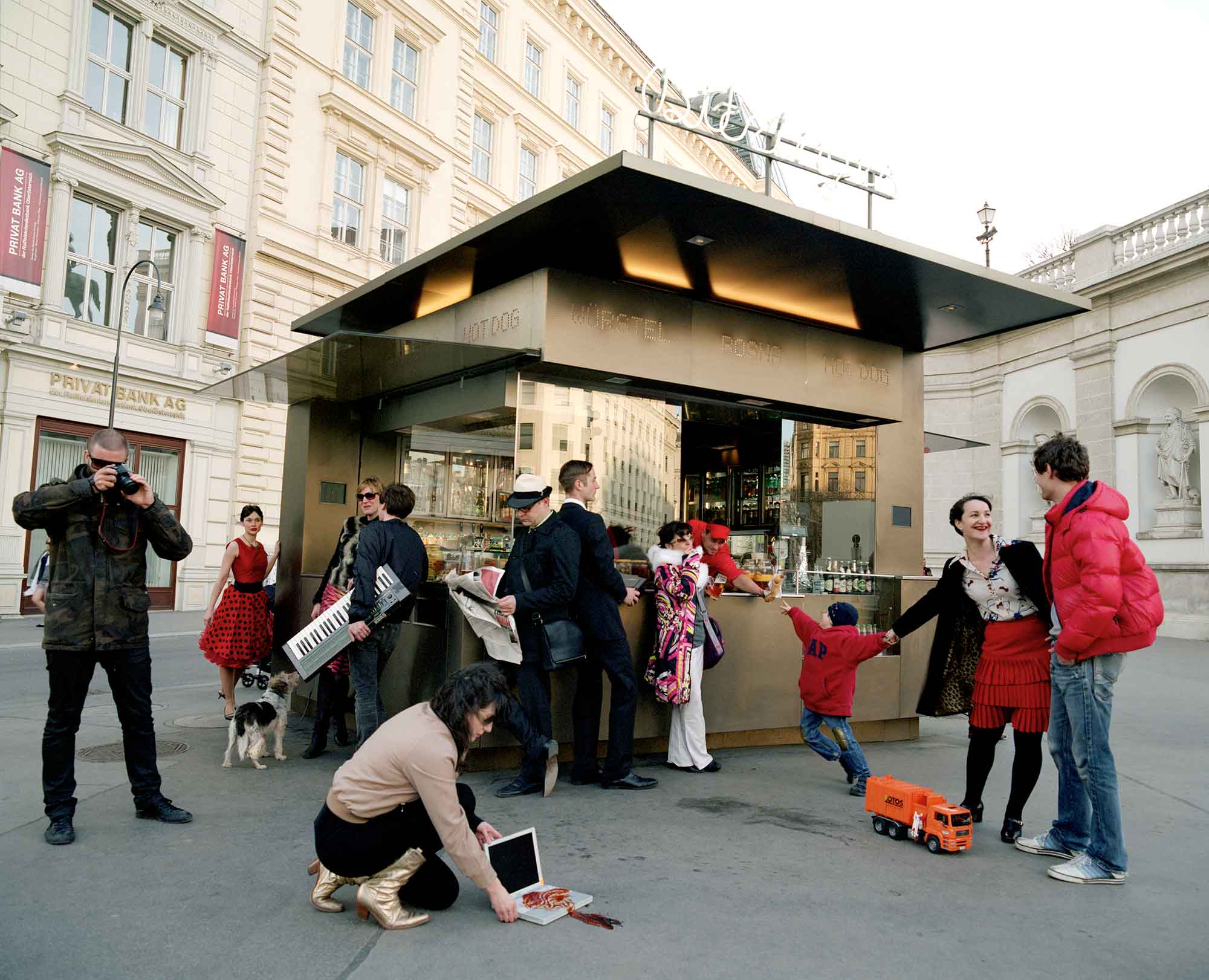
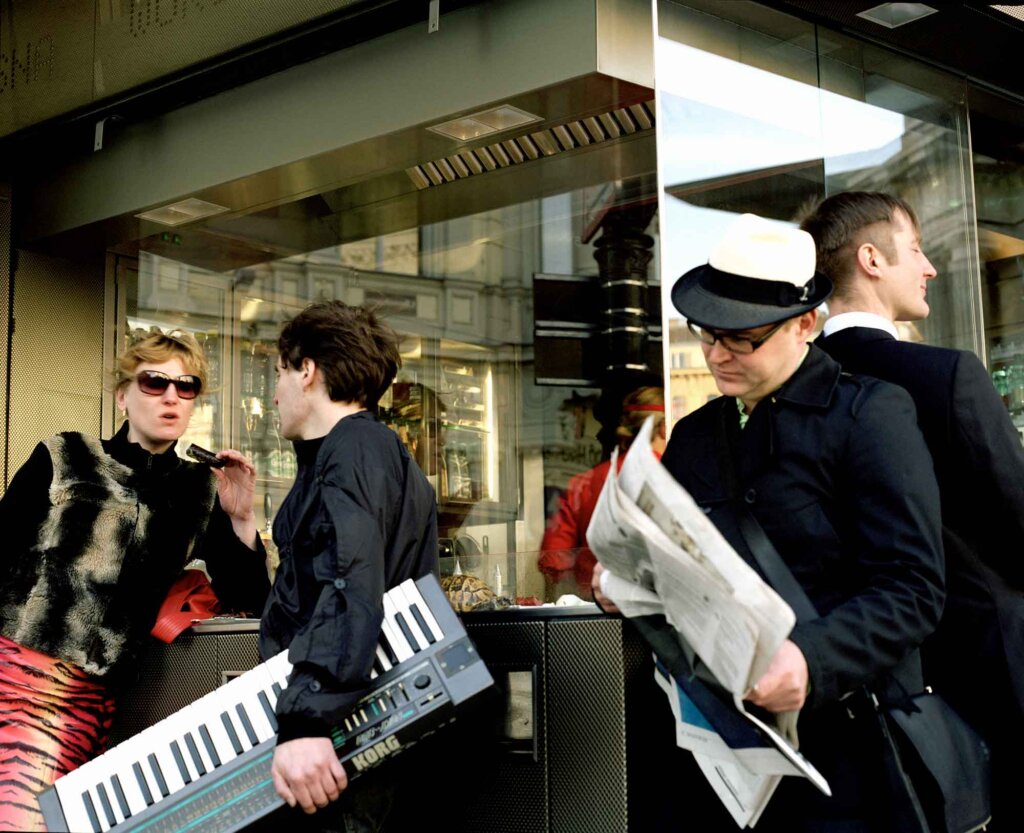
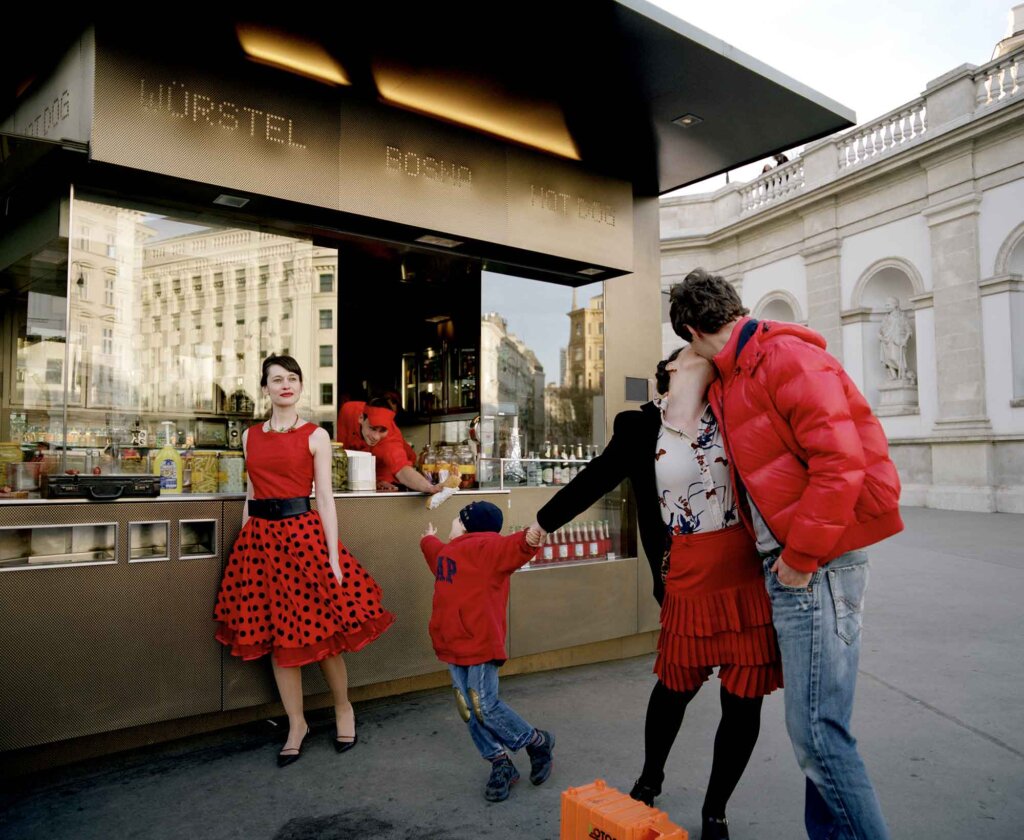
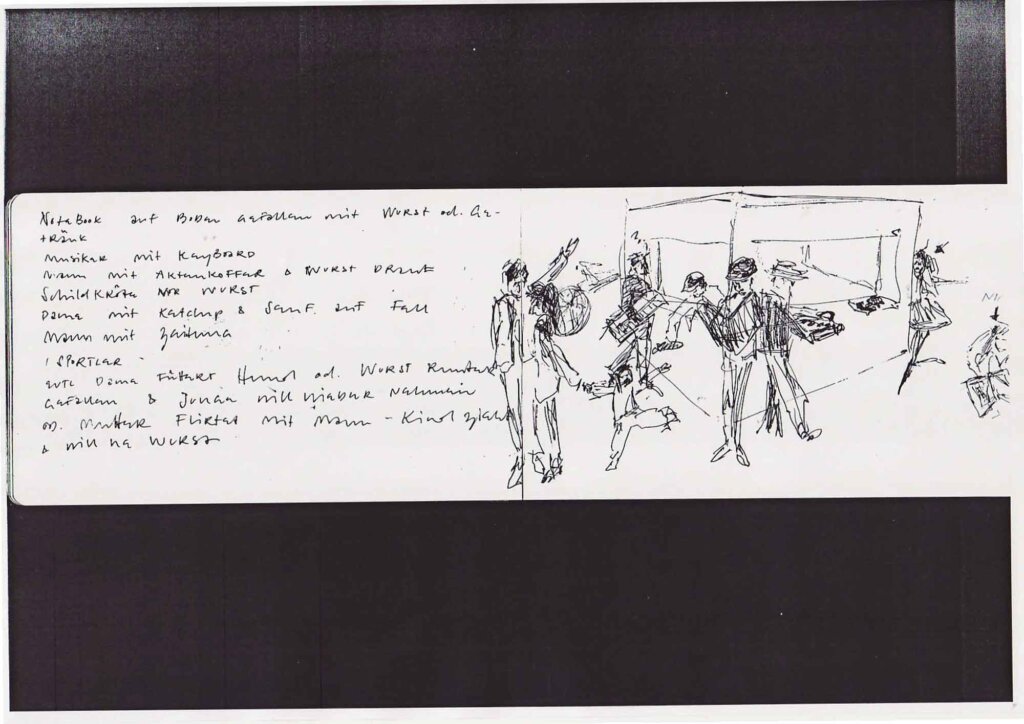
Bitzinger sausage stand on Albertinaplatz
Three photographic works by Corinne l. Rusch, 2009
Lambda Print mounted on Alu-Dibond panels
Contact: www.corinnerusch.com;
E‑Mail: corinne@theselection.net
Theater and exhibition
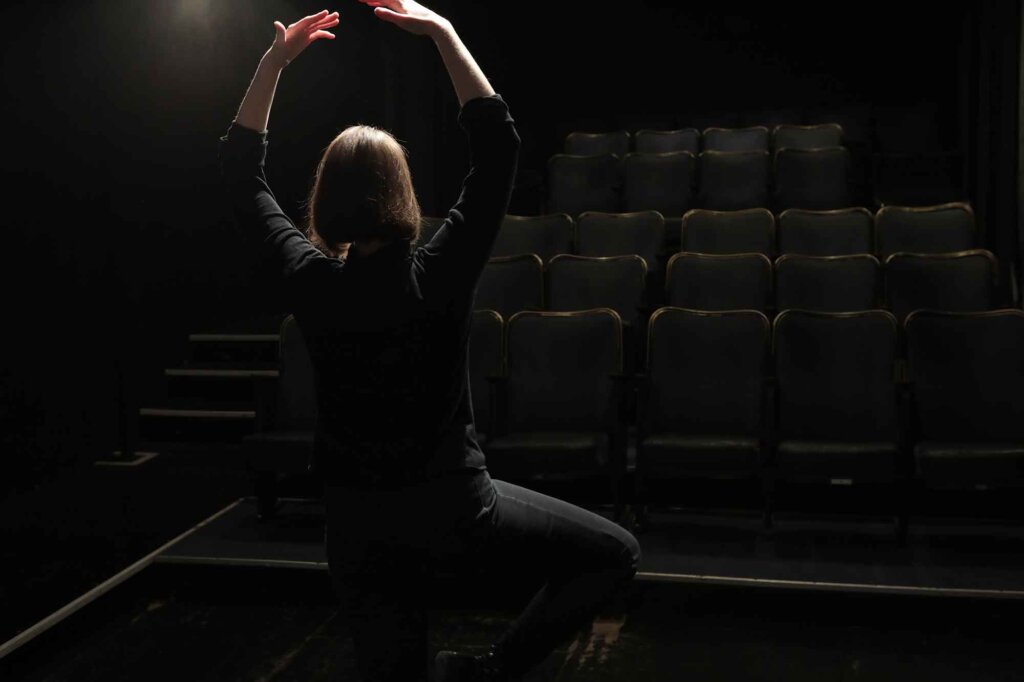
“Practice makes perfect”. Lisa Kröll at the Pygmalion Theater in Vienna.
Photographed by Michael Dürr. From the “Metaphors” series, office magazine no. 4, 2023
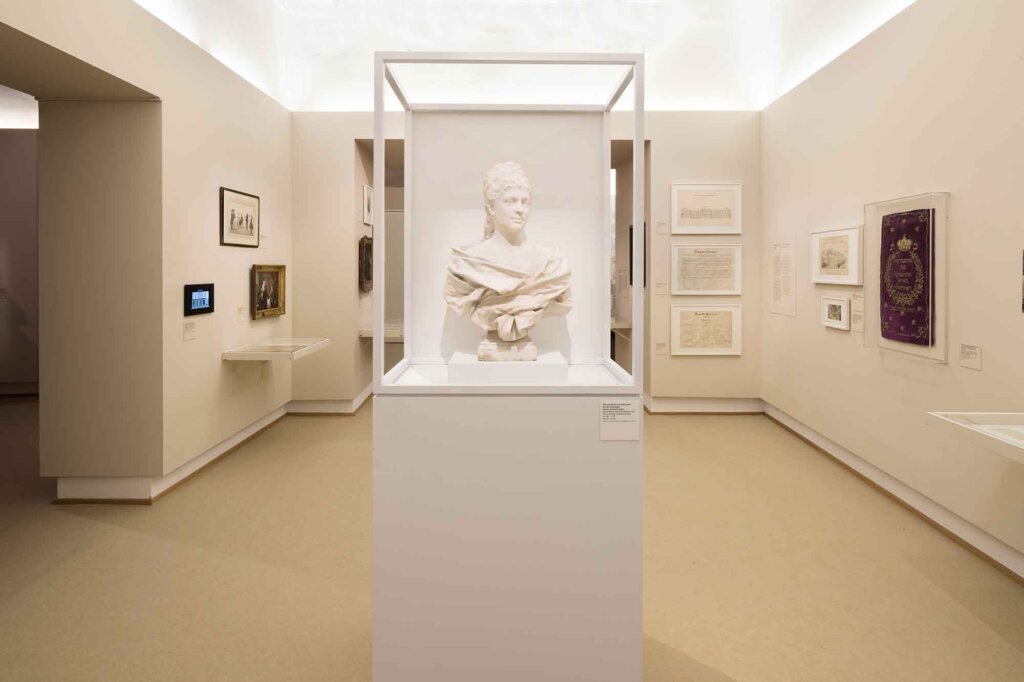
Exhibition “The Viennese Rothschilds”, Jewish Museum Vienna, 2022
Photographed by Christoph Panzer
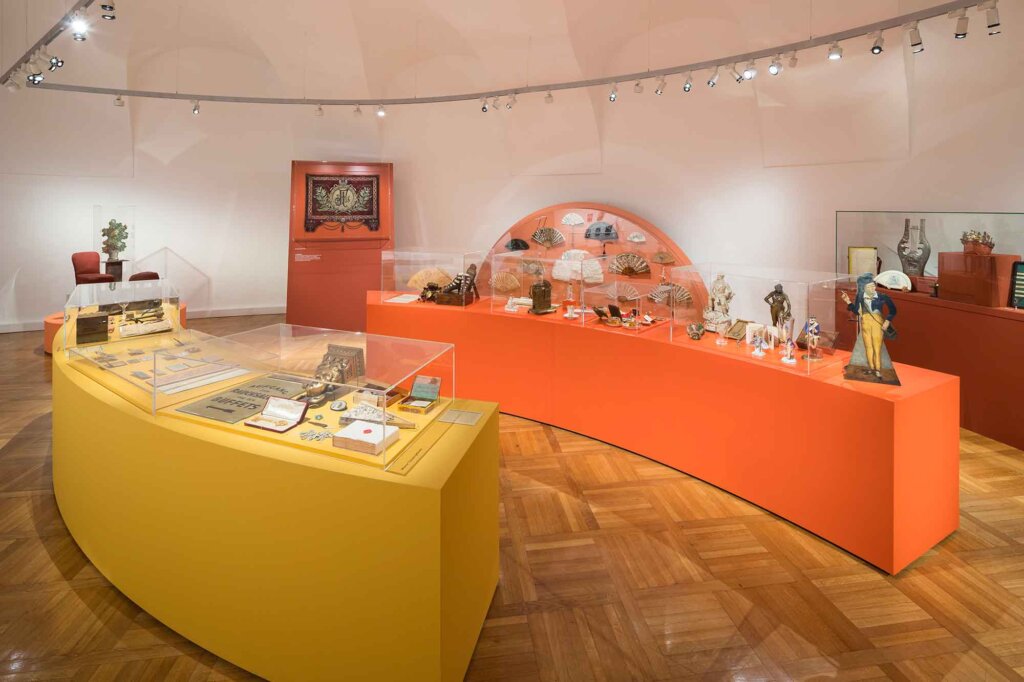
Semicircular hall of the exhibition “Verehrt-Begehrt”, Theatermuseum Vienna, 2022.
Photographed by Christoph Panzer
The city as a stage 3
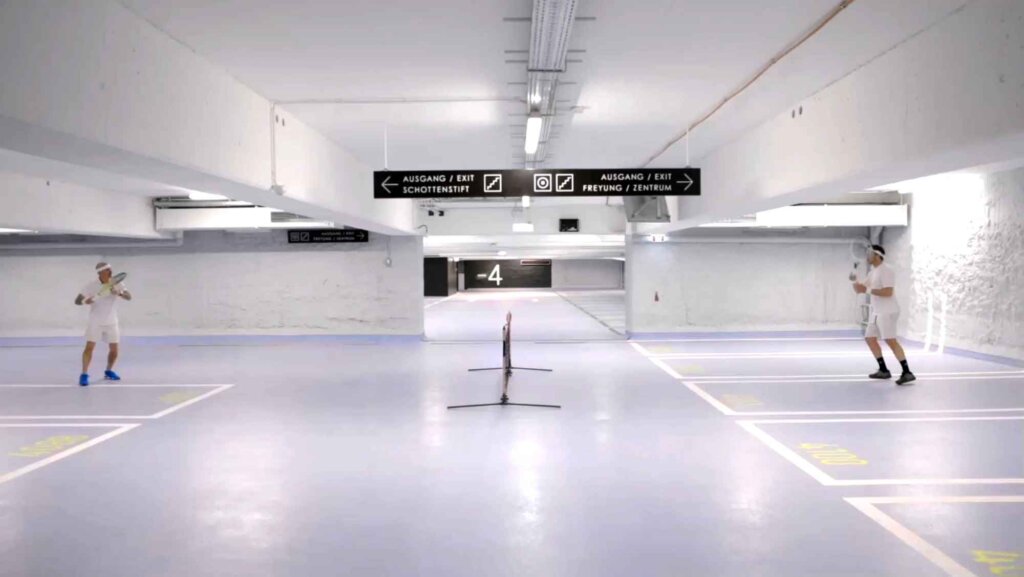
Garage Freyung, video by Michael Dürr, 2022
/ Foreign ideas /
Ideas that we didn’t have ourselves and had to steal 1
10 tips for better architecture
1 Don’t invent anything
2 Mix everything
3 Ask artists
4 Simple refinement
5 Spinning foreign ideas further
6 Remaining enigmatic
7 Embracing the old
8 Separate cover from contents
9 Taste generously
10 Learning from the large number
Ideas that we didn’t have ourselves and had to steal 2
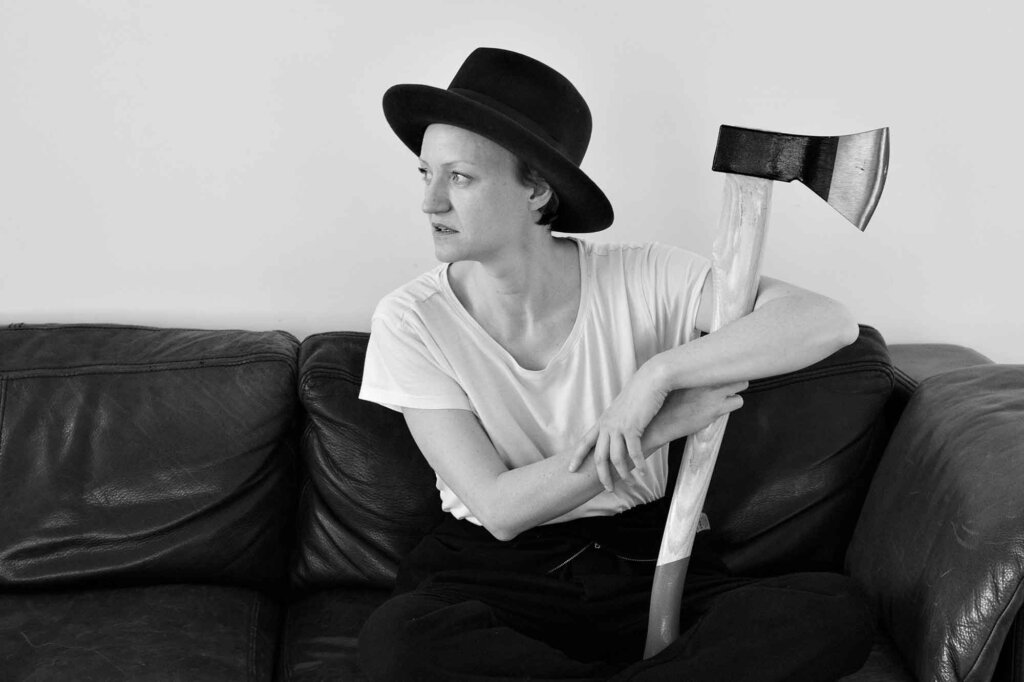
“The axe in the forest”, photographed by Michael Dürr. From the series “Metaphors”, office booklet no. 4, 2023.
After the motif: Robert Lebeck, “Josef Beuys in his Düsseldorf studio apartment”, 1970
Ideas that we didn’t have ourselves and had to steal 3
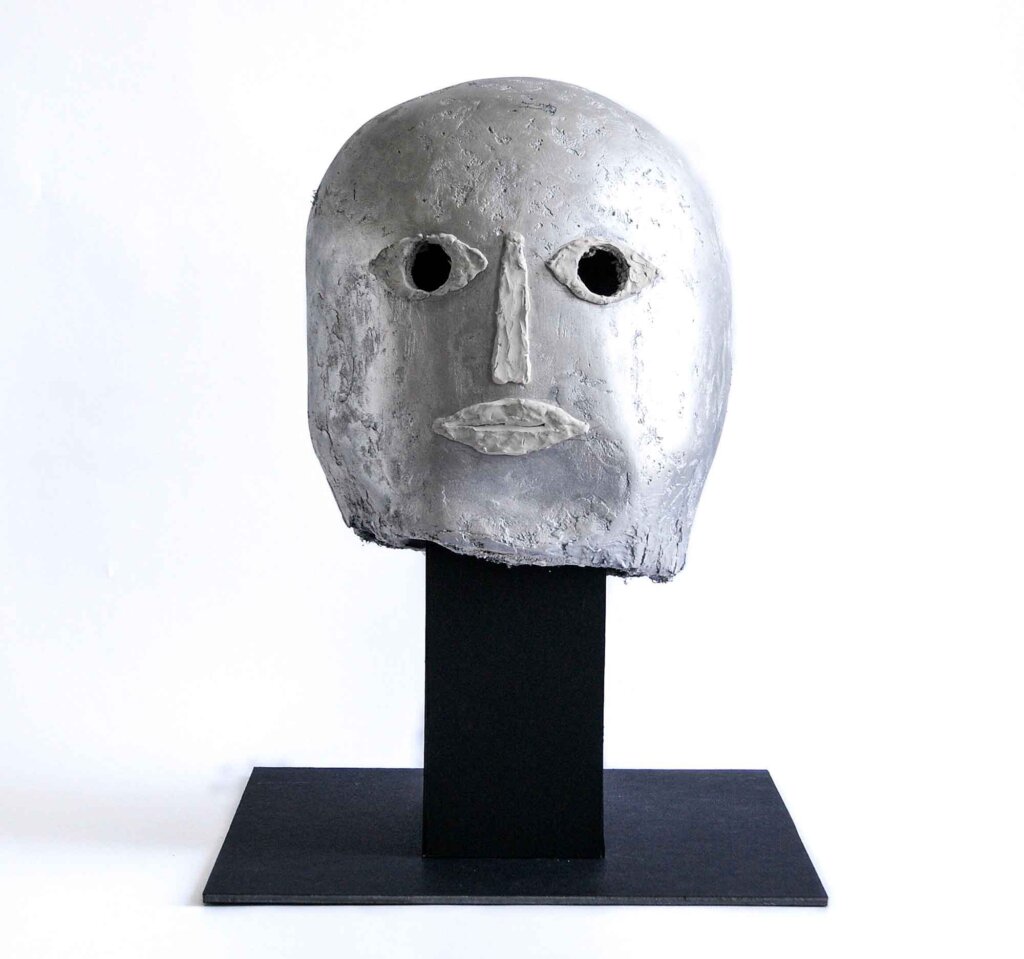
“Mask 1”, executed by Florian Schauhuber, 2023
After a photo series about Marcel Breuer’s tubular steel chair


